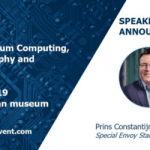Light-Trapping, Color-Converting Crystal Step Toward Faster Telecommunications & Quantum Computers

(ScienceDaily) Stanford University’s procedure for creating a microscopic crystal structure that can hold two wavelengths of light at once is a step toward faster telecommunications and quantum computers.
At the heartnonlinear optics are devices that change light from one color to another — a process important for many technologies within telecommunications, computing and laser-based equipment and science. But Stanford post-doc Minkov wanted a device that also traps both colors of light, a complex feat that could vastly improve the efficiency of this light-changing process — and he wanted it to be microscopic.
In order to prove the near-impossible was still possible, Minkov and Shanhui Fan, professor of electrical engineering at Stanford, developed guidelines for creating a crystal structure with an unconventional two-part form. The details of their solution were recently published.
If telecommunications channels were a highway, flipping between different wavelengths of light would equal a quick lane change to avoid a slowdown — and one structure that holds multiple channels means a faster flip. Nonlinear optics is also important for quantum computers because calculations in these computers rely on the creation of entangled particles.




















